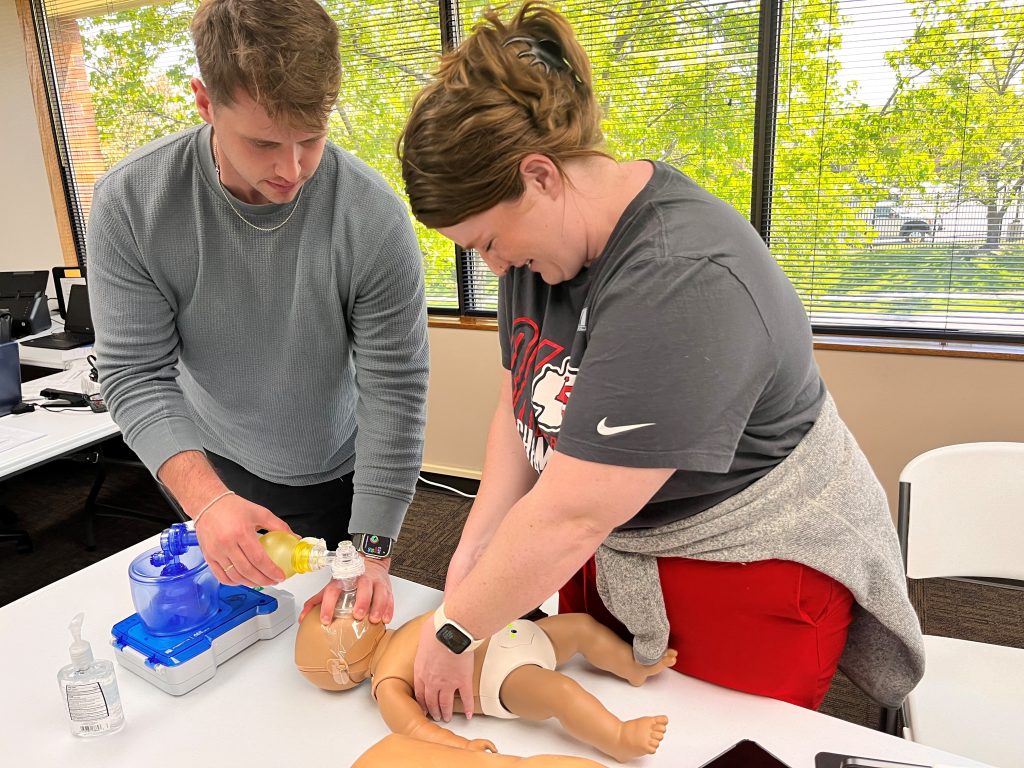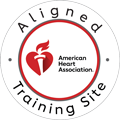Cardiac arrest remains a significant public health challenge, with survival rates often dishearteningly low. When a sudden cardiac arrest occurs, every second counts, and the quality of cardiopulmonary resuscitation, or CPR, can be the difference between life and death. While chest compressions rightly receive significant attention for their role in circulating blood, the often-overlooked aspect of ventilation during CPR is equally critical. Improper ventilation, particularly excessive ventilation, is a common error that can dramatically undermine the effectiveness of CPR and ultimately reduce a patient’s chances of survival and neurological recovery. This article will explore the vital purpose of ventilation during CPR, delve into how excessive ventilation can negatively impact outcomes, and outline best practices to ensure effective and life-saving rescue breathing.

What is the Purpose of Ventilation During CPR?
Primary Functions of Ventilation
The fundamental purpose of ventilation during CPR is to support the body’s essential gas exchange. When circulation is compromised during cardiac arrest, the lungs must still receive oxygen and expel carbon dioxide to maintain a viable environment for vital organs. Specifically, ventilation delivers oxygen to the lungs and bloodstream, ensuring that oxygenated blood can reach the brain and other critical tissues. Simultaneously, it removes carbon dioxide, a waste product of cellular metabolism, preventing its harmful buildup in the body.
Physiological Goals During Cardiac Arrest
The physiological goal is to support minimal gas exchange, prevent hypoxemia (low oxygen levels) and hypercapnia (high carbon dioxide levels), and work in harmony with chest compressions to maximize organ perfusion.
Current Guidelines and Rationale
Current guidelines from organizations like the American Heart Association provide clear recommendations for ventilation rates, emphasizing a balance between adequate oxygenation and minimizing interruptions to chest compressions. For a single rescuer, the recommendation is a 30:2 compression-to-ventilation ratio, while for patients with an advanced airway, continuous compressions are maintained with a rescue breath every six seconds. These evidence-based approaches are designed to optimize the delicate interplay between compressions and ventilations.
How Does Excessive Ventilation Affect CPR?
Despite the clear guidelines, excessive ventilation is a frequent occurrence during CPR, often with severe consequences.
Call Us Now
Get the Best CPR Class in Kansas City Today!
Hemodynamic Consequences
One of the primary negative impacts is on hemodynamics, the forces involved in circulating blood. Overly forceful or frequent breaths increase intrathoracic pressure within the chest cavity. This elevated pressure compresses the major veins returning blood to the heart, significantly reducing venous return. With less blood returning to the heart, the cardiac output, or the amount of blood the heart pumps with each beat, decreases, leading to a profound reduction in coronary perfusion pressure. This, in turn, impairs blood flow to vital organs, including the heart itself and the brain, which are already struggling from the lack of circulation.
Physiological Disruptions
Beyond hemodynamic disturbances, excessive ventilation also causes physiological disruptions. Hyperventilation can lead to respiratory alkalosis, an imbalance where too much carbon dioxide is exhaled, making the blood more alkaline. This can have detrimental effects on cellular function. Furthermore, excessive ventilation can reduce cerebral blood flow due to vasoconstriction of blood vessels in the brain, further compromising brain perfusion in an already vulnerable state. It also interferes with the body’s natural carbon dioxide drive for circulation, which plays a role in maintaining vascular tone.
Impact on Chest Compressions
Perhaps one of the most critical negative impacts of excessive ventilation is its interference with chest compressions. Each breath, especially when given too frequently, necessitates an interruption of continuous chest compressions. These interruptions reduce the compression fraction, which is the percentage of time that compressions are actually being performed. Even brief pauses can lead to a significant drop in coronary perfusion pressure, which takes several compressions to rebuild. Research consistently demonstrates that higher compression fractions correlate with improved survival rates and better neurological outcomes, underscoring the importance of minimizing any interruptions caused by ventilation.
Clinical Outcomes
Clinical studies have shown that patients who receive excessive ventilation during CPR have lower rates of return of spontaneous circulation, reduced overall survival, and a higher incidence of neurological impairment and brain injury.
Common Scenarios Leading to Hyperventilation
Common scenarios that lead to hyperventilation include rescuer anxiety and stress, a misunderstanding of current ventilation guidelines, insufficient training or practice, and even equipment-related factors such as improper bag-mask ventilation technique.
How Do You Ensure Effective Ventilation in CPR?
Proper Ventilation Techniques
Ensuring effective ventilation during CPR requires adherence to proper techniques and a clear understanding of the goals. For bag-mask ventilation, rescuers must use the correct method to create a seal and deliver an appropriate tidal volume, aiming for visible chest rise rather than excessive chest expansion.
Timing and Coordination
The optimal ventilation rate is crucial; with an advanced airway, this typically means 10 to 12 breaths per minute, carefully timed to avoid interrupting chest compressions. Avoiding excessive force and volume is paramount. Timing and coordination are vital, especially in multi-rescuer scenarios. Ventilations must be synchronized with chest compressions, and interruptions should be minimized. Clear team communication and pre-assigned roles, with regular rotation, can help maintain high-quality CPR.
Equipment Considerations
Equipment considerations also play a role. Proper airway management tools, correct bag-mask sizing, and appropriate selection of advanced airway devices, if used, contribute to effective ventilation. When available, capnography monitoring provides real-time feedback on ventilation effectiveness and can help identify hyperventilation by monitoring end-tidal carbon dioxide levels. The foundation of effective CPR, including proper ventilation, lies in consistent and high-quality training. Regular CPR training and certification renewal are essential, reinforced by simulation-based learning that mimics realistic cardiac arrest scenarios. Debriefing sessions after training or real events provide invaluable feedback mechanisms. Real-time CPR quality monitoring devices can further aid in recognizing and correcting hyperventilation by providing immediate data on ventilation rates and compression quality. Recognizing signs of excessive ventilation, such as excessively rapid or forceful breaths, and adjusting accordingly, is a team-based approach to quality control. Utilizing metronomes or other timing aids can also help maintain the correct ventilation rate.
Training and Quality Improvement
Staying current with best practices and evidence-based recommendations is crucial for anyone involved in emergency care. The latest American Heart Association guidelines, along with international consensus recommendations, continually refine the approach to ventilation optimization in CPR. Implementing these guidelines involves fostering high-performance CPR teams through continuous quality improvement programs and structured post-resuscitation debriefing protocols. Excellence in training programs is fundamental, emphasizing structured learning approaches, extensive hands-on practice, and stress inoculation training to prepare rescuers for high-pressure situations. Regular competency assessments ensure that skills remain sharp and up-to-date.
The Role of Professional Training Organizations
Importance of Quality CPR Education
Professional training organizations play a pivotal role in ensuring that CPR education is of the highest quality. The American Heart Association sets rigorous training standards, providing a comprehensive curriculum that meticulously covers proper ventilation techniques. These organizations strive to create hands-on, stress-free learning environments where individuals can master critical life-saving skills.
Local Training Excellence
Locally, organizations like CPR Kansas City embody this commitment to effective CPR education. They offer a range of essential certifications, including Basic Life Support for Healthcare Providers, Advanced Cardiovascular Life Support, and Pediatric Advanced Life Support, with a strong emphasis on proper ventilation techniques integrated into all courses. These organizations provide ongoing support for healthcare professionals and community members, empowering them with the knowledge and skills to make a difference in critical moments.
While chest compressions are undeniably foundational to CPR, the impact of proper ventilation cannot be overstated. Excessive ventilation significantly reduces survival rates and neurological recovery by negatively affecting hemodynamics, disrupting physiological balance, and critically interrupting chest compressions. Understanding the delicate balance required for effective ventilation and adhering to established guidelines is paramount. The continuous pursuit of quality CPR through regular training, adherence to best practices, and the utilization of feedback mechanisms is essential for improving cardiac arrest outcomes. By embracing evidence-based practice and seeking quality training from certified organizations, individuals can ensure they are equipped to deliver the most effective and life-saving CPR possible, ultimately giving patients the best chance at survival and a full recovery.
FAQs
1. What is excessive ventilation during CPR?
Excessive ventilation occurs when rescuers provide too many breaths or breaths that are too forceful during CPR. This common mistake can increase pressure in the chest cavity, reducing blood flow back to the heart and decreasing the effectiveness of chest compressions.
2. How does over-ventilation affect CPR outcomes?
Over-ventilation reduces venous return to the heart, decreases cardiac output, and can cause gastric inflation leading to vomiting. Studies show that excessive ventilation significantly lowers survival rates and neurological outcomes in cardiac arrest patients.
3. What is the correct ventilation rate during CPR?
The American Heart Association recommends a ventilation rate of 10-12 breaths per minute for adults during CPR with an advanced airway. Without an advanced airway, provide 2 breaths after every 30 chest compressions at a ratio of 30:2.
4. How can healthcare providers avoid excessive ventilation?
Proper training emphasizes controlled, gentle breaths that make the chest rise visibly but not excessively. Using bag-mask devices correctly, monitoring chest rise, and maintaining proper compression-to-ventilation ratios are key to avoiding over-ventilation.
Call to Action
Master proper CPR techniques and avoid common mistakes like excessive ventilation. Enroll in CPR Kansas City’s American Heart Association-certified courses today. Our stress-free, hands-on training ensures you learn life-saving skills correctly. Contact us now to schedule your BLS, ACLS, PALS, or CPR certification class.


